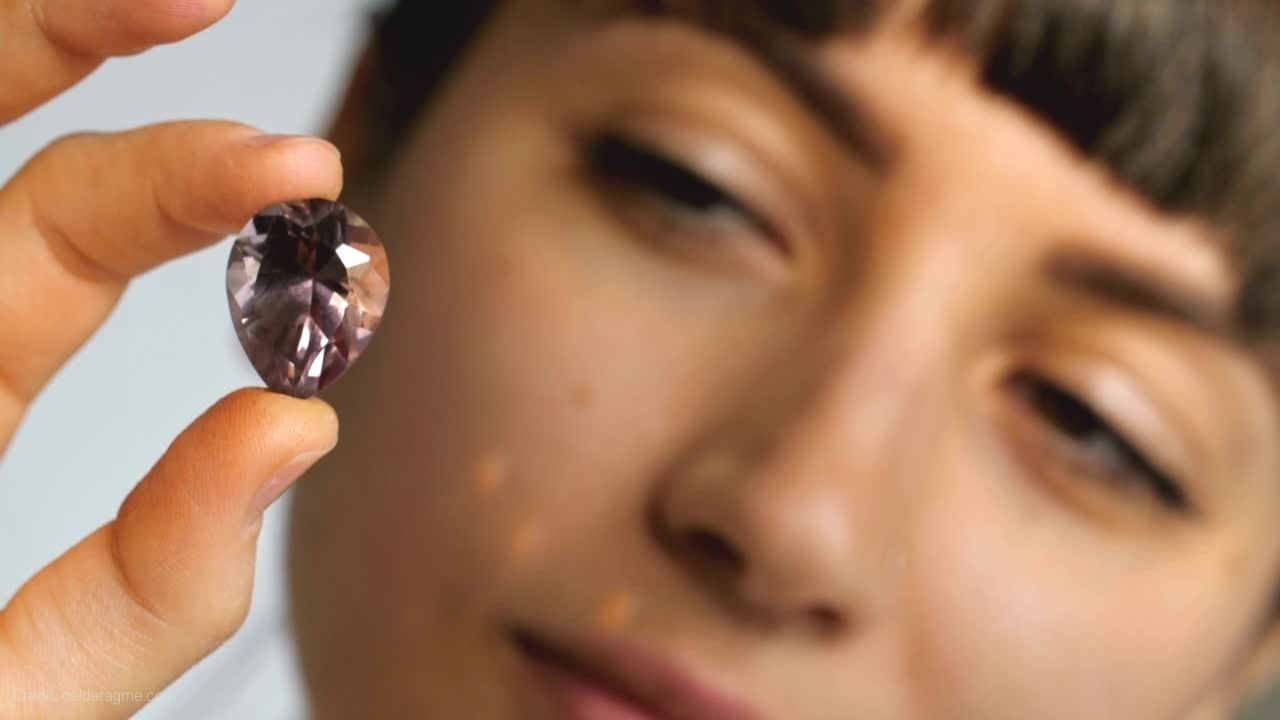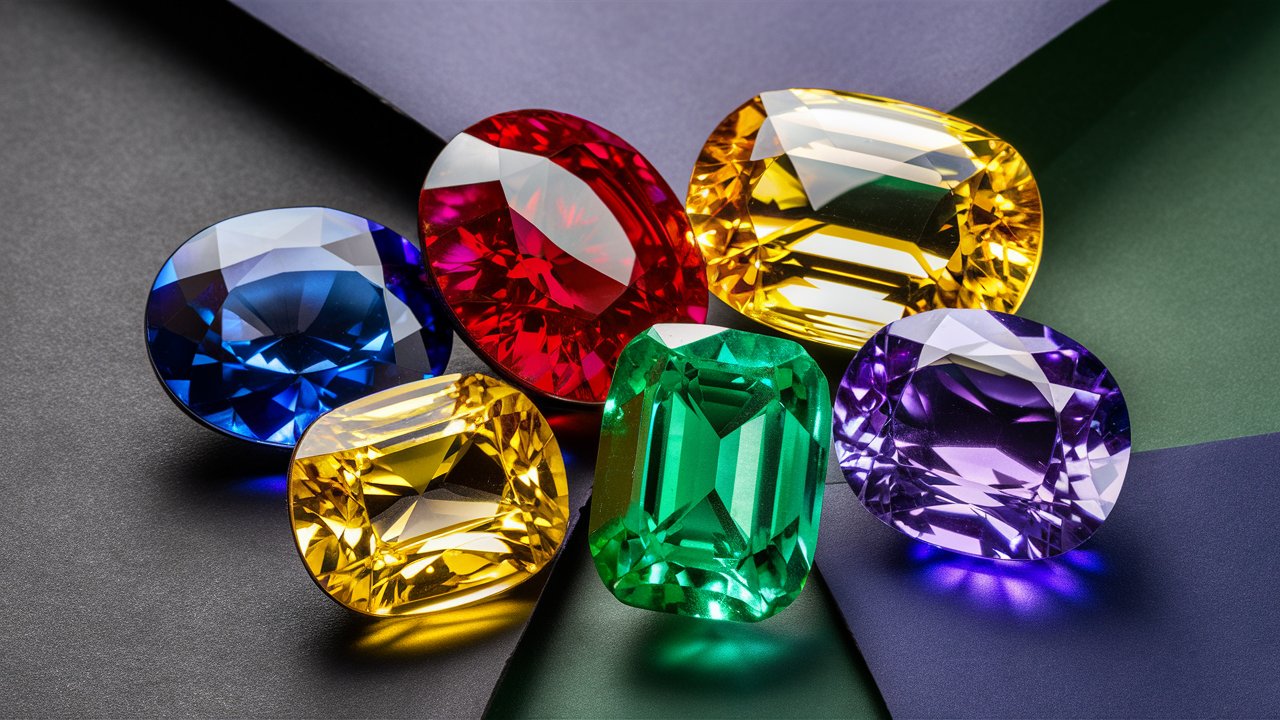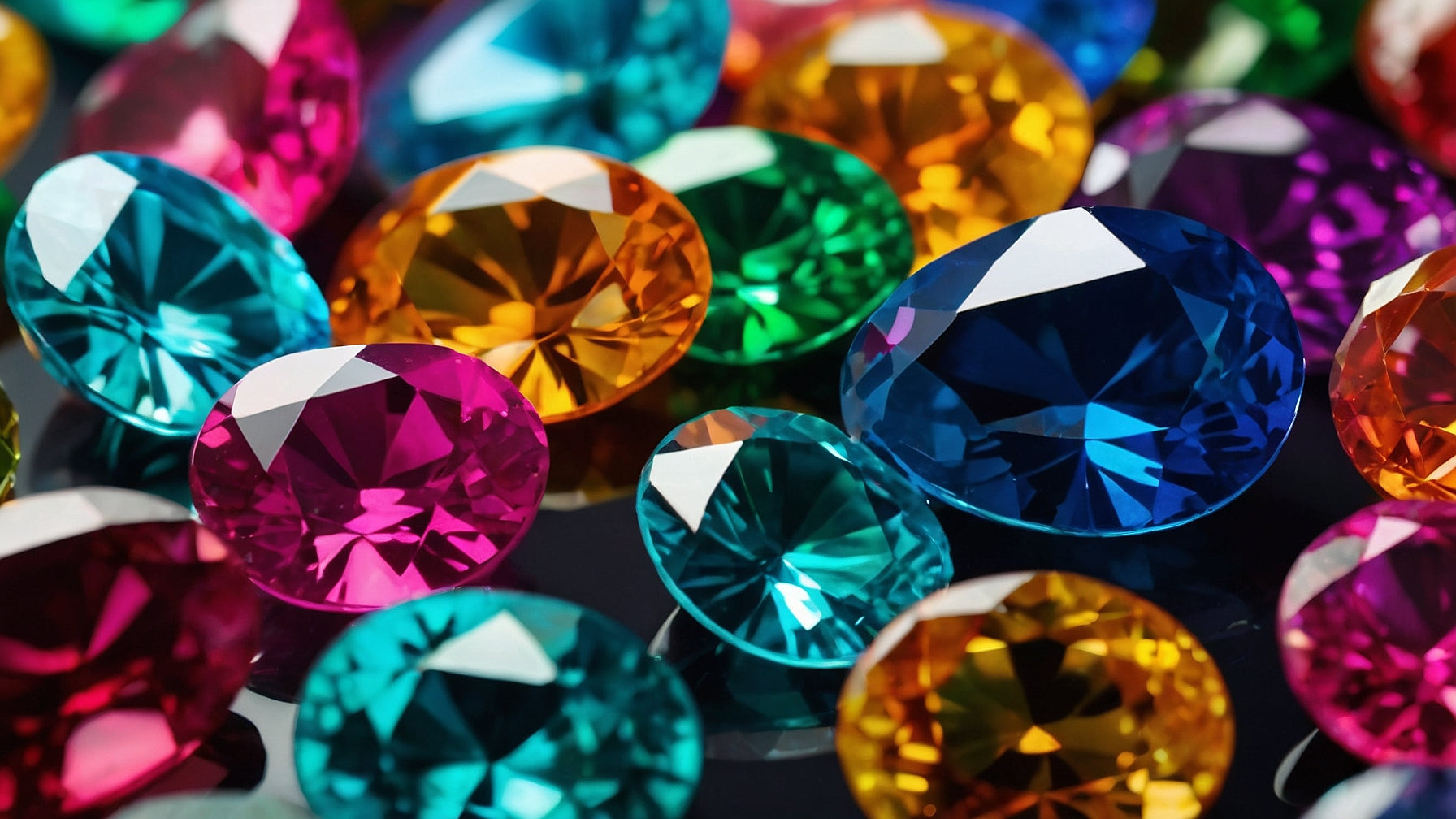
How Can I Determine The Value Of A Gemstone
Finding out how much a gemstone is worth is complex and requires a lot of knowledge. It mainly depends on the Four Cs: carat, color, clarity, and cut. These factors are key in figuring out a gemstone's value. It's important to know them whether you're investing or just love jewelry.
Buying high-value gemstones loose lets you check their weight and look closely at their beauty. Inclusions and the cut's precision affect their price a lot. Rarity and color quality also play big roles in assessing a gemstone's value. Plus, knowing what people want and how gemstones react to their environment is key to pricing them right.
If you plan to use these gems in jewelry, think about how they look, how rare they are, and how strong they are. The Mohs Scale shows how well a gemstone can handle daily wear. This makes sure it's worth its price.
Key Takeaways
- Understanding the Four Cs—carat, color, clarity, and cut—is essential for accurate gemstone value assessment.
- Loose gemstone examination allows better verification of weight and visual attributes.
- Inclusions and the quality of cuts influence the gemstone’s worth significantly.
- Rarity and color quality are critical factors in valuing gemstones.
- Considering potential return on investment is important before determining the value of a gemstone.
For more detailed insights into the valuation process, the Four Cs of Gemstone Valuation offers valuable information.
Understanding the Four Cs of Gemstone Value Assessment
The Four Cs—carat weight, color, clarity, and cut—are key to figuring out a gemstone's value. Each factor is important for assessing a gemstone's worth. This framework helps us accurately estimate a gemstone's value.
Carat Weight
Carat weight measures a gemstone's size, down to the hundredth of a carat. This greatly affects its value, as bigger stones are rarer and more valuable. For instance, a 100-carat gemstone is much rarer and more valuable than a one-carat one with similar qualities.
Color
Color is a major factor in a gemstone's value. Small changes in color can greatly affect its price. For example, a gemstone's color should be royal blue for sapphires, pure red for rubies, and deep green for emeralds. The top three diamond colors (D to F) mean the stone is colorless and very valuable.
Clarity
Clarity looks at the gemstone's inclusions and blemishes. These can affect how the gem looks and works. Gems with fewer inclusions are clearer and more valuable. The GIA Clarity Scale rates gems from Flawless to Included.

Cut
The cut of a gemstone affects its look, making it more brilliant and beautiful. Symmetrical cuts make gems look better. Faceted gems show off light refraction, while cabochon cuts highlight natural colors and patterns. A well-cut gemstone shows off its best features, adding to its value.
Using the Four Cs—carat weight, color, clarity, and cut—we can fully understand a gemstone's value. This method considers all parts that make a gem valuable.
Evaluating Gemstone Worth Based on Color
Understanding gemstone color quality is key to figuring out their value. About 60% of a gemstone’s value comes from its color. Clarity and cut add 25% and 15% respectively. This shows how important hue, saturation, and tone are to gemologists.
Hue
Hue is the first thing gemologists look at when checking a gemstone's color. The right hue can greatly affect a gem's value. For example, a bluish-green emerald is more valuable than a light yellow-green one.
Saturation
Saturation is how vibrant a gemstone’s color is. It goes from dull to very vivid. The more saturated a gemstone is, the more valuable it is. Rubies and sapphires with deep saturation are very sought after and expensive.
Tone
Tone is about how light or dark a gemstone is. It can be very light or very dark. Getting the tone right makes a gemstone more valuable. If it's too light or too dark, the value drops.

Looking at a gemstone's hue, saturation, and tone helps figure out its worth. Saturation and hue are crucial. Getting the color right makes a gemstone more desirable and valuable.
Clarity: The Impact of Inclusions and Blemishes
Understanding clarity in gemstones is key to knowing their quality and value. The clarity grade shows how many inclusions and blemishes are in the stone. Inclusions are inside the stone and can be things like cracks or minerals. Blemishes are marks on the outside. Let's look at the types of inclusions and how they change the gemstone's value.
Types of Inclusions
There are many types of inclusions, and they can change how a gemstone looks and costs. Here's a list of clarity grades and the inclusions they include:
- VVS (very, very slight inclusions): These inclusions are hard to see with a magnifying glass and are in high-quality gemstones like aquamarine or morganite.
- VS (very slight inclusions): These inclusions are small and can be seen with a magnifying glass but not with the naked eye. They are found in gemstones like amethyst and garnet.
- SI1 and SI2 (slight inclusions): These inclusions are more noticeable and can affect the stone’s strength and clarity, found in gemstones like tourmaline.
- I1, I2, and I3 (included): These inclusions are easy to see with the naked eye and are often in Type 3 colored gemstones like emeralds and rubellites.
Effect on Value
The value of a gemstone is mostly affected by the size, location, and visibility of inclusions. For example, diamonds with no inclusions cost more than those with inclusions. In colored gemstones, inclusions can make the stone more unique and valuable. Some gemstones, like demantoid garnets and Oregon sunstones, can be more valuable because of their inclusions.
Here's how clarity types affect gemstone value:
| Clarity Type | Description | Examples |
|---|---|---|
| Type I | Usually eye-clean | Heliodor, aquamarine, morganite |
| Type II | Minor inclusions visible | Amethyst, alexandrite, peridot |
| Type III | Visible inclusions typical | Emerald, tourmaline, rubellite |
Clarity in gemstones is very important for their value. Inclusions can make a gemstone less attractive and less valuable if they are visible. But, in some cases, inclusions can make a gemstone more unique and valuable.
Gemstone Cut and Its Influence on Value
The cut of a gemstone greatly affects its value. It makes the stone look more beautiful by how it reflects light. Lapidarists use special techniques to make each gemstone shine its best. Knowing about different cuts helps collectors and fans understand their value.

Cut Quality
The cut of a gemstone boosts its value by making it look brighter and more colorful. Lapidaries work hard to make stones look perfect. They focus on the stone's weight, shape, and smoothness.
This makes the stone sparkle, flash, and shimmer. The right cut means the stone reflects light well. A high polish grade also helps with this.
Types of Cuts
There are many gemstone cuts, from simple shapes to unique designs. Each cut affects the gemstone's value by changing how it looks with light. The round brilliant cut is very popular for its sparkle.
Other cuts, like the Asscher or cushion, show off the gemstone's color and clarity. Knowing about faceting helps with investing and enjoying the craftsmanship.
How Carat Weight Affects Gemstone Value Calculation
Knowing the importance of carat in gemstone valuation is key for those in gem trading or investment. The carat system, adopted around 1920, makes it a major factor in gemstone pricing. One carat equals 0.20 grams, setting the standard for gemstone value.
The carat scale splits into 100 points for precise measurements. This system helps maintain consistency in the market. Indian Law or Tavernier's Law shows the link between carat weight and price. The law states: Weight² × C = Price per stone.
Let's look at an example. With a $1,000 per carat base price, the cost increases as follows:
| Carat Weight | Total Price (USD) |
|---|---|
| 1 carat | $1,000 |
| 2 carats | $4,000 |
| 3 carats | $9,000 |
| 4 carats | $16,000 |
| 5 carats | $25,000 |
| 10 carats | $100,000 |
The table shows that bigger stones cost more due to their rarity and demand. This proves the carat weight influence on market price. Precise carat weight is crucial since prices are quoted per carat. This highlights the need for accurate electronic weighing in gem trading.

Market price is also swayed by "milestone carat weights" or "magic sizes." These sizes often command higher prices. For instance, a diamond just over one carat can be more expensive than one slightly under.
In conclusion, grasping the importance of carat in gemstone valuation and its effect on market price is vital for gemstone market participants. This knowledge helps in making better buying or selling decisions, ensuring we know their real value.
Rarity and Its Role in Gemstone Value Estimation
Gemstone rarity greatly affects their value. The allure and demand for precious stones are deeply influenced by how rare they are. Let's explore how supply and demand, along with specific examples, impact the value of rare gems.
Supply and Demand
The supply and demand principle is key in valuing rare gemstones. The rarer a gemstone is, the more valuable it becomes. For example, fine quality emeralds are much pricier than common amethysts. Emeralds can go for over $2000 per carat, while amethysts are around $10 per carat.
Also, trends and traditions boost the demand for certain gems. This makes their rarity even more valuable. Rubies and emeralds, for instance, are highly sought after because of their history and cultural importance. They often cost more per carat than colorless diamonds of similar quality.
Examples of Rare Gemstones
Many gemstones show how rarity affects their value. Padparadscha sapphires are very rare, especially in sizes over two carats. This scarcity makes them more valuable than similar diamonds. Benitoite and euclase are so rare they don't usually command high prices, despite their scarcity.

Bi-color sapphires are another example. Their unique look makes them more interesting and valuable. The jade market also shows this, with prices reaching up to $100,000 per carat for the rarest types.
The Significance of Hardness in Determining Gemstone Market Price
Understanding the Mohs Scale is key for anyone looking into gemstone pricing. Friedrich Mohs created this scale to rank minerals by hardness, from 1 for talc to 10 for diamond. The hardness of a gemstone affects its durability and market value. For instance, diamonds, with a perfect 10 on the Mohs scale, are the hardest and most durable for jewelry like rings and bracelets.
Gems like opal (5-6) or calcite (3) are softer and more prone to scratches. They are best used in jewelry that's less exposed, like pendants or earrings. Dust with a hardness of 7-7.5 can scratch softer gems, affecting their look and life.
Gems like ruby and sapphire are great for everyday jewelry because they're tough and need little upkeep. On the other hand, amber (2-2.5) or malachite (3-3.5) are softer and more likely to get damaged, making them less suitable for daily wear.
Here’s a table showing the hardness of various gemstones and their market value:
| Gemstone | Mohs Hardness | Wearability |
|---|---|---|
| Diamond | 10 | Excellent |
| Sapphire | 9 | Excellent |
| Emerald | 7.5-8 | Very Good |
| Opal | 5-6 | Poor |
| Calcite | 3 | Display Only |
The Mohs Scale is crucial in understanding a gemstone's durability and value. It helps us see which gems are best for different uses. This way, we can make smart choices when buying these beautiful items.
How Can I Determine The Value Of A Gemstone
Finding out a gemstone's value is a complex task that combines gemology and market trends. We'll give you tips to figure out its worth in the market.
Getting advice from a professional appraiser is a smart move, especially for expensive stones. They use tools like refractometers and spectrometers for precise identification. An appraiser can check if a stone is real or fake with a gemological lab's seal of approval.
Looking at the gemstone by itself helps see its true beauty. The Four Cs—Carat, Color, Clarity, and Cut—are key to its price. It's important to see the stone under different lights to understand its real color. Also, check for natural flaws that can change its clarity and value.
Knowing how gemstones form naturally or synthetically affects their value. Natural ones take ages to form, while synthetic ones are made faster but are denser. Treatments like heating or dyeing can change how a gem looks and its price. It's important to keep track of these treatments for accurate pricing.
Fashion trends can also change a gemstone's value. Rare stones like Tanzanite or color-changing alexandrite are more valuable. On the other hand, common stones like aquamarine or rose quartz are less expensive.
How clear a gemstone is also matters for its value. Its ability to split light into two images and its hardness on the Mohs scale are important. For a full valuation, talk to a gemologist or get a certificate of authenticity.
Remember these tips for gemstone valuation to make smart choices when buying or selling. This way, you'll know the true market value of each stone.
Conclusion
Figuring out a gemstone's value is complex. It depends on the Four Cs: carat weight, color, clarity, and cut. A carat is 200 milligrams or 100 points, making it key for weighing the gemstone accurately.
Color is very important in valuing a gemstone. Things like hue, saturation, and tone affect its price. For stones like aquamarine and blue topaz, being clear boosts their value a lot.
Cutting quality also matters a lot. The round brilliant cut, with its 57 or 58 facets, makes a gemstone more beautiful and valuable.
Rarity can make a gemstone more expensive. Gems from places like Kashmir or Myanmar are often pricier. Heat treatments can also change a gemstone's color or clarity, but these changes must be shared with buyers.
Knowing where a gemstone comes from is getting more important. Labs like Gübelin help figure this out, but it's still a mix of science and expert knowledge.
With the gemstone market always changing, keeping up with these factors is key. Working with professional gemologists for appraisals and insurance can protect your investments. Understanding these elements helps us move through the gemstone world with confidence.
FAQ
How can I determine the value of a gemstone?
To figure out a gemstone's value, look at the Four Cs: carat weight, color, clarity, and cut. For expensive stones, buy them loose to check their weight and look. It's also key to talk to a pro appraiser and keep up with market trends for an accurate value.
What are gemstone appraisal methods?
Appraising gemstones involves checking them by sight, measuring their weight, looking at their color, and checking for clarity. Experts use tools like microscopes and scales for accuracy. They might give a report on the gem's look and value.
What factors should I consider when valuing gemstones?
When valuing gemstones, think about the Four Cs: carat weight, color, clarity, and cut. Also, consider how rare it is, its demand, any treatments, and its Mohs Scale hardness. How pretty it looks and its overall quality also matter a lot.
How is gemstone value calculated?
Calculating gemstone value means looking at the Four Cs: carat weight, color, clarity, and cut. You also need to think about its rarity, market trends, and any treatments. These factors all play a big part in the final value.
What are some tips for gemstone valuation?
For gemstone valuation, get advice from a pro appraiser. Check the gem in various lights. Buy loose stones for a close look. Know how geology and market trends affect value. Keep up with gemstone market trends too.
What are the methods for determining the market price of a gemstone?
To find out a gemstone's market price, look at prices from trusted sources and compare them to similar sales. Get an independent appraisal too. Watching market trends, auction results, and gemstone trade news can also help you understand current values.


